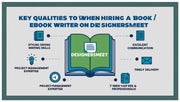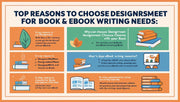Typography plays a crucial role in the success of any design project. It’s not just about choosing pretty fonts—typography affects readability, user experience, and even brand perception. Selecting the right fonts can elevate your design, while poor choices can confuse or alienate your audience.
In this blog, we’ll guide you through how to choose the right typography for your design projects.
Why Typography Matters
Good typography enhances the clarity of your message and creates an emotional connection with your audience. It influences how users perceive your brand and can significantly impact engagement and conversion rates.
Keyword Highlight: importance of typography, typography in design, typography impact
Understand Different Font Types
There are several font categories, each suitable for different design purposes:
-
Serif Fonts: Characterized by small lines or strokes attached to the ends of letters (e.g., Times New Roman). They convey tradition, reliability, and formality.
-
Sans Serif Fonts: Clean and modern without decorative strokes (e.g., Arial, Helvetica). Ideal for digital screens and modern brands.
-
Script Fonts: Mimic handwriting or calligraphy, used for elegance and creativity but best for headings or decorative text.
-
Display Fonts: Unique and decorative fonts used sparingly for headlines or branding.
Keyword Highlight: serif fonts, sans serif fonts, script fonts, display fonts
Consider Readability and Legibility
Your typography should be easy to read across all devices and screen sizes. Avoid overly intricate or decorative fonts for body text. Use appropriate font sizes, line heights, and spacing to ensure clarity.
Keyword Highlight: typography readability, font legibility, font size and spacing
Match Typography to Brand Personality
Choose fonts that reflect your brand’s tone and values. For instance, a law firm may opt for classic serif fonts to project professionalism, while a creative agency might use playful script or display fonts.
Keyword Highlight: brand typography, font and brand identity, typography and brand personality
Use Font Pairing Wisely
Combining fonts can add visual interest but requires careful balance. Pair a serif with a sans serif, or a bold font with a light one, ensuring contrast without clashing.
Limit your design to two or three complementary fonts for cohesion.
Keyword Highlight: font pairing tips, complementary fonts, typography harmony
Test Across Platforms
Fonts may render differently on various devices and browsers. Always test your typography choices on multiple screens to ensure consistency.
Keyword Highlight: cross-platform typography, font rendering, typography testing
Utilize Web-Safe Fonts and Licensing
Use web-safe fonts that are supported across browsers and devices or embed custom fonts properly. Also, consider font licensing to avoid legal issues.
Keyword Highlight: web-safe fonts, font licensing, custom fonts for web
Conclusion
Choosing the right typography is a blend of art and science that significantly impacts your design’s success. At DesignersMeet.com, we provide expert advice and resources to help you select fonts that enhance your message and resonate with your audience.




